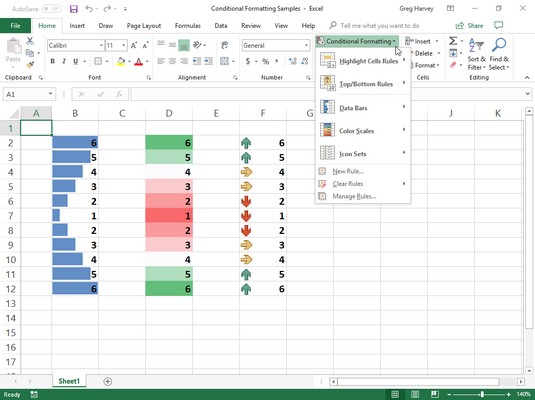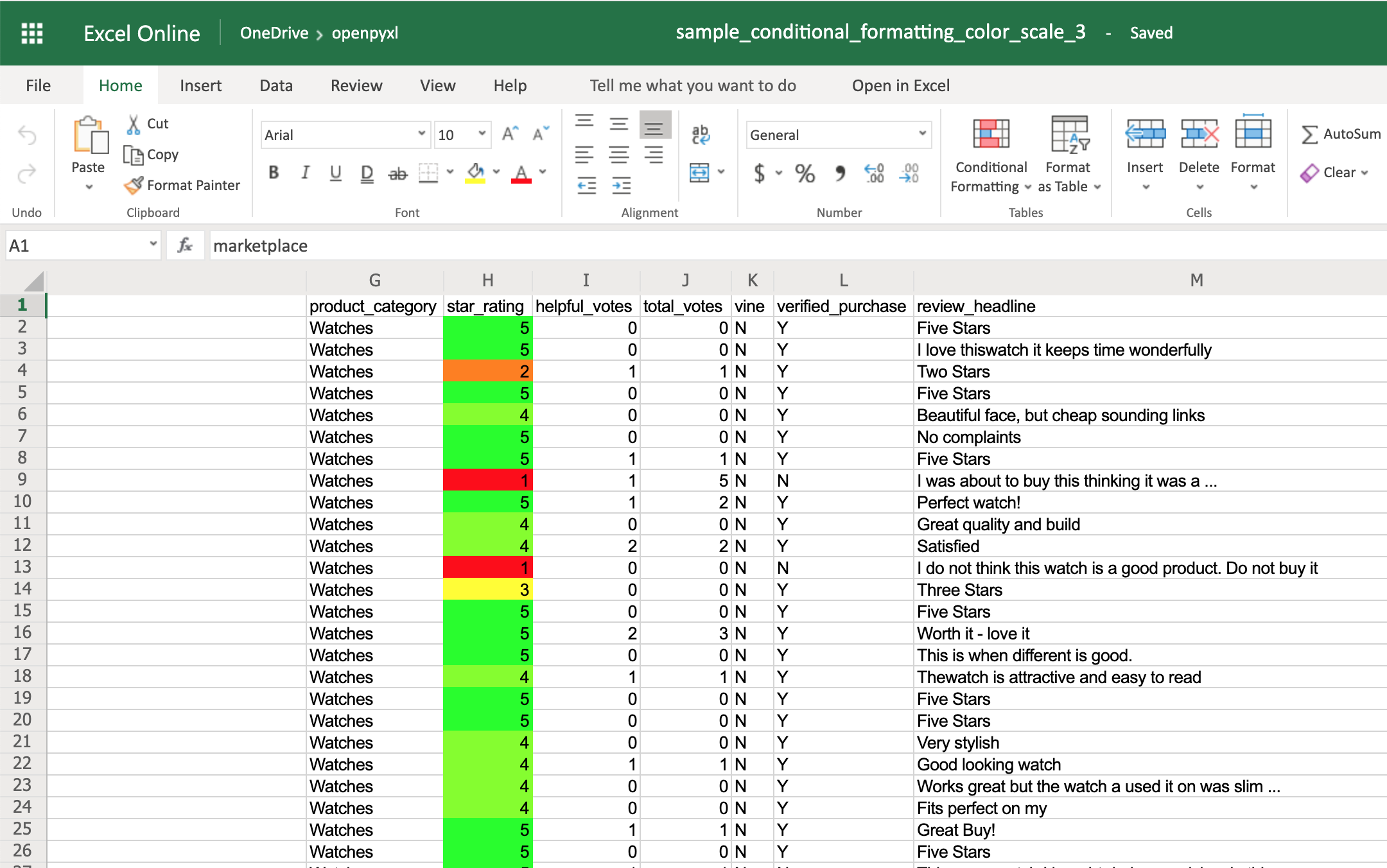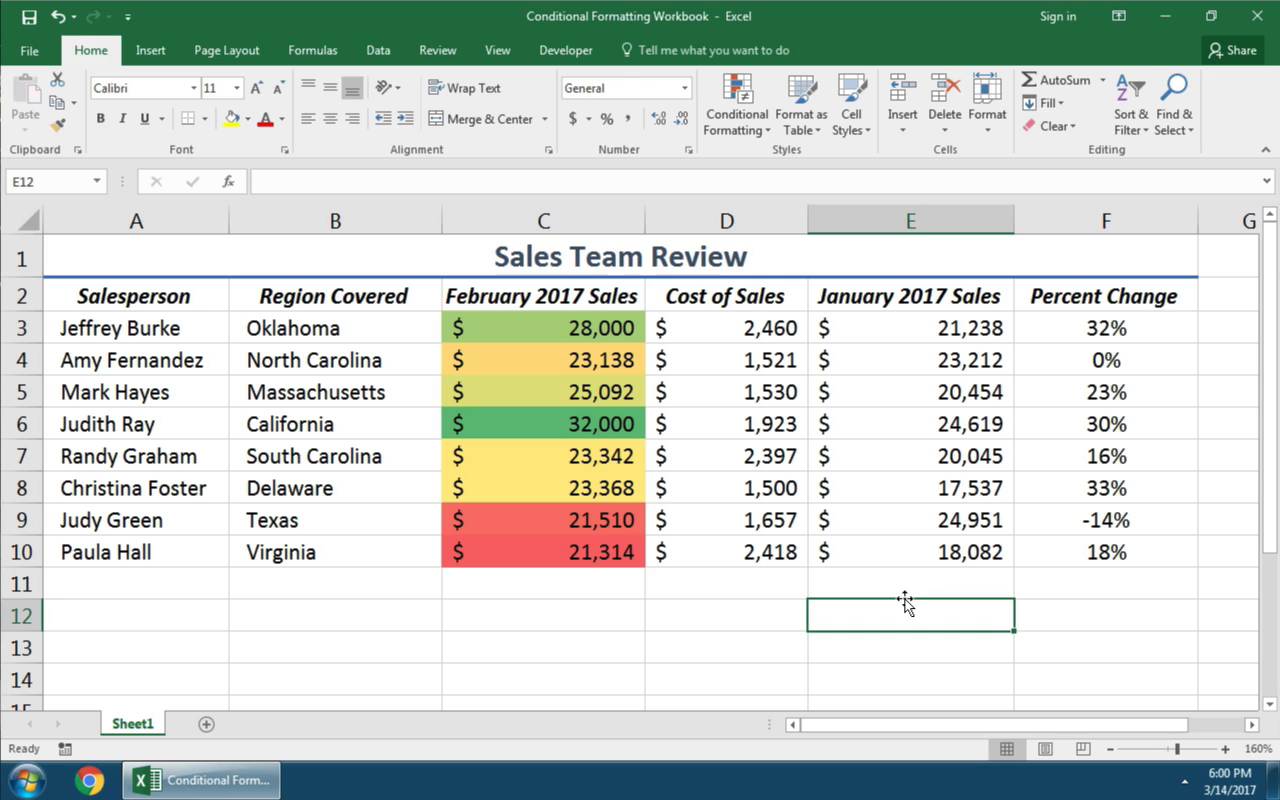

- #CUSTOM FORMATTING EXCEL BASED ON TEST IN A TABLE HOW TO#
- #CUSTOM FORMATTING EXCEL BASED ON TEST IN A TABLE PROFESSIONAL#
Double-Click this Query in the left panel.Ģ. Please follow the steps here and try to check the result.ġ. The formatting of data will keep the same and won’t change. However, after we keep the original data in the connected query in Text, then load this part of data. And you changed the queried data formatting instead of changing the original data type, so you have the "2513966" after changing Format Cells to Text in queried cells. Preprogrammed, so that it will change the numbers to dates automatically. I think this situation and yours changing are because Excel is Then we find the data format become like this: csv file and get data in new workbook from this. We test it in the same Monthly channel version of Excel by these steps:ġ.
#CUSTOM FORMATTING EXCEL BASED ON TEST IN A TABLE HOW TO#
You cannot save a custom chart style, but you can save the entire chart as a chart template that you can use to create a similar chart.įor information on how to work with chart styles, see Change the layout or style of a chart.Thanks for providing the information for us. Excel provides a variety of useful predefined chart styles that you can choose from, and you can customize a style further if needed by manually changing the style of individual chart elements. Just like with Excel tables, you can choose a predefined alternate-row style that retains the alternate row pattern when you filter, hide, or rearrange rows.įor information on how to work with PivotTable styles, see Design the layout and format of a PivotTable report.Ĭhart styles You apply a predefined style to your chart. PivotTable styles To format a PivotTable, you can quickly apply a predefined or custom PivotTable style.

When you choose one of the predefined alternate-row styles, Excel maintains the alternating row pattern when you filter, hide, or rearrange rows.įor information on how to work with table styles, see Format an Excel table.
#CUSTOM FORMATTING EXCEL BASED ON TEST IN A TABLE PROFESSIONAL#
Table styles To quickly add designer-quality, professional formatting to an Excel table, you can apply a predefined or custom table style.

When you switch to another document theme, these cell styles are updated to match the new document theme.įor information on how to work with cell styles, see Apply, create, or remove a cell style. Some cell styles are based on the document theme that is applied to the entire workbook. If needed, you can modify a predefined cell style to create a custom cell style. To prevent anyone from making changes to specific cells, you can also use a cell style that locks cells.Įxcel has several predefined cell styles that you can apply. A cell style is a defined set of formatting characteristics, such as fonts and font sizes, number formats, cell borders, and cell shading. For charts, you can customize a chart style and save it as a chart template that you can use again.ĭepending on the data that you want to format, you can use the following styles in Excel:Ĭell styles To apply several formats in one step, and to ensure that cells have consistent formatting, you can use a cell style. If predefined styles don't meet your needs, you can customize a style. If needed, you can also create your own document theme by changing any or all of the theme colors, fonts, or effects that a document theme is based on.īefore you format the data on your worksheet, you may want to apply the document theme that you want to use, so that the formatting that you apply to your worksheet data can use the colors, fonts, and effects that are determined by that document theme.įor information on how to work with document themes, see Apply or customize a document theme.Ī style is a predefined, often theme-based format that you can apply to change the look of data, tables, charts, PivotTables, shapes, or diagrams. Your company may provide a corporate document theme that you can use, or you can choose from a variety of predefined document themes that are available in Excel. For a uniform and professional look, a document theme can be applied to all of your Excel workbooks and other Office release documents. A document theme is a predefined set of colors, fonts, and effects (such as line styles and fill effects) that will be available when you format your worksheet data or other items, such as tables, PivotTables, or charts.


 0 kommentar(er)
0 kommentar(er)
